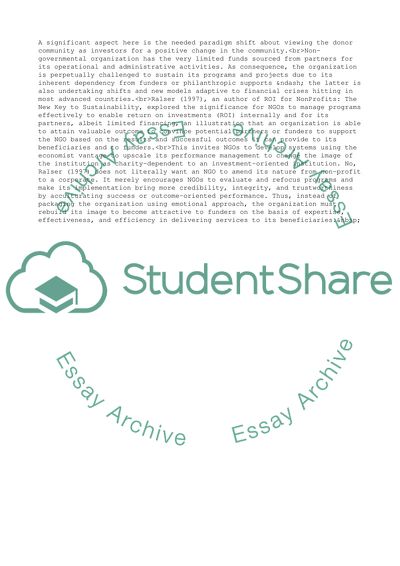Cite this document
(The Correlation of ROI and Strategic Performance Management for NGOs Coursework, n.d.)
The Correlation of ROI and Strategic Performance Management for NGOs Coursework. Retrieved from https://studentshare.org/management/1773063-final-projectgoverning-and-leading-nonprofits
The Correlation of ROI and Strategic Performance Management for NGOs Coursework. Retrieved from https://studentshare.org/management/1773063-final-projectgoverning-and-leading-nonprofits
(The Correlation of ROI and Strategic Performance Management for NGOs Coursework)
The Correlation of ROI and Strategic Performance Management for NGOs Coursework. https://studentshare.org/management/1773063-final-projectgoverning-and-leading-nonprofits.
The Correlation of ROI and Strategic Performance Management for NGOs Coursework. https://studentshare.org/management/1773063-final-projectgoverning-and-leading-nonprofits.
“The Correlation of ROI and Strategic Performance Management for NGOs Coursework”, n.d. https://studentshare.org/management/1773063-final-projectgoverning-and-leading-nonprofits.


